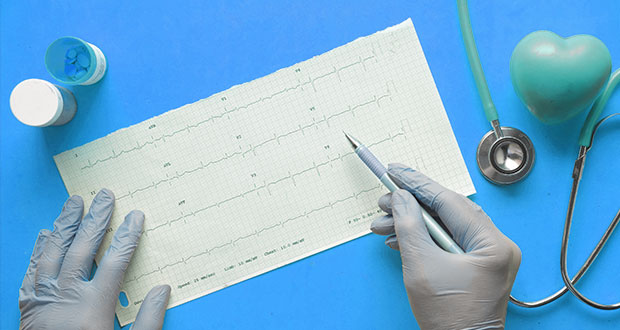
The Importance of the Early Detection of Cardiovascular Disease
April 6, 2020
Cardiovascular disease (CVD) still remains the main cause of morbidity and mortality and consequently, early diagnosis is of paramount importance.
Health care expenditures are overwhelming where costs are skyrocketing, predominantly because of the escalating costs of care of advanced disease. Congestive heart failure afflicts more than 5 million people and consumes more than $30 billion in health-care expenditures annually in the United States alone.q
The goal for identifying a marker or markers for early cardiovascular disease that could serve as a surrogate for disease progression and ultimate morbid events is to improve the precision for early detection and treatment.
Screening tests to identify early vascular and cardiac functional and structural abnormalities identify the high prevalence of abnormalities in asymptomatic individuals without clear-cut risk factors for cardiovascular disease.
According to the American Heart Association (AHA), cardiovascular disease (CVD) kills one woman every minute in the United States. Additionally, one out of every three women will experience some form of CVD during their lifetime. Heart attacks, strokes, arrhythmia, and heart valve problems are all forms of cardiovascular disease and although the rate of CVD in America is staggeringly high, the AHA reports that most cases are preventable by early detection and leading a more heart-healthy lifestyle.
Early Detection in Primary Care
Early detection of cardiovascular disease can be the difference between life and death. By being cognizant of the early signs of CVD, you’ll have a better chance of catching threats early on.
We must note that there are two major hurdles in making Primary Care the front-line of heart care. First, is a technology gap – currently, there is no simple to use medical device suitable for the screening of asymptomatic patients, that is able to detect and diagnose a sufficiently broad range of heart diseases, including ALVD, that is suitable for widespread use in Primary Care.
Compounding this technology gap is the second hurdle, knowledge and experience gap. This second hurdle is because of the complexity of the human heart, which requires a high level of knowledge and experience to effectively be able to understand. Heart disease is never just one disease, and each disease has a multi-symptom nature.
The lack of an appropriate device coupled with the heart’s complexity explains why heart disease was always regarded as the domain of cardiology, and why Primary Care did not play a bigger role. But the times are changing.
For Primary Care to be the new Front-line of heart care, an appropriate medical device needs to be able to detect and diagnose the onset of a “broad-range” of heart disease, coupled with strong AI support acting as the physician’s assistant. Only then can it be considered effective for the widespread screening of asymptomatic patients.
From the cardiologist’s perspective, by implementing new technology and start detecting the earlier onset of CVDs in Primary Care, there are tangible benefits as well.
- There will be fewer “healthy” patients taking up space in their waiting room. This means more “real” patients could be attended, on a more timely basis, appointment timelines can be reduced from 6 months to 3 months.
- They will be able to identify Ischemia more easily. (normally identifiable using ECG but then combined as part of CHART, this ability is greatly increased).
Even a few years back, the WHO started developing a project for earlier detection of CVD´s.
WHO project targets early detection, management of heart disease
This is where we see a clear opportunity for Doctors, and patients to be empowered and conscious about the importance of detecting earlier the onset of cardiovascular disease and that their healthcare practitioners enable heart disease prevention and early-stage screening for improved heart health.
“We would like the public to be more conscious of their heart health, especially of their preventable risk factors, and make the necessary healthier lifestyle changes.”
The technology able to detect the earlier onset of heart disease is just around the corner and will be available soon for the world. Its name, Cardio-HART by Cardio Phoenix Inc. An AI-Powered heart diagnostic device for the earlier detection of up to 95% of all common heart diseases.
In the end, such a device will help to better coordinate Primary Care with Cardiology Care and foster greater inter-level collaboration, benefiting not only the patient, their families, but also the healthcare insurers that must provide for, and pay for, those patients in their time of greatest need.
